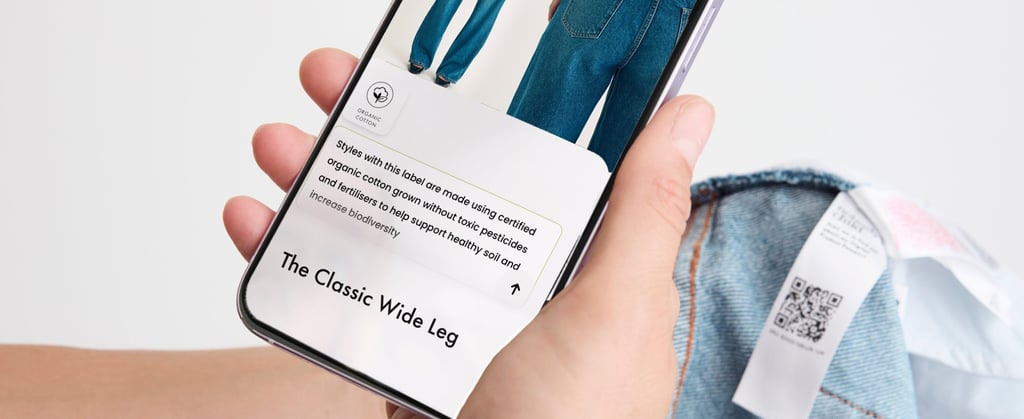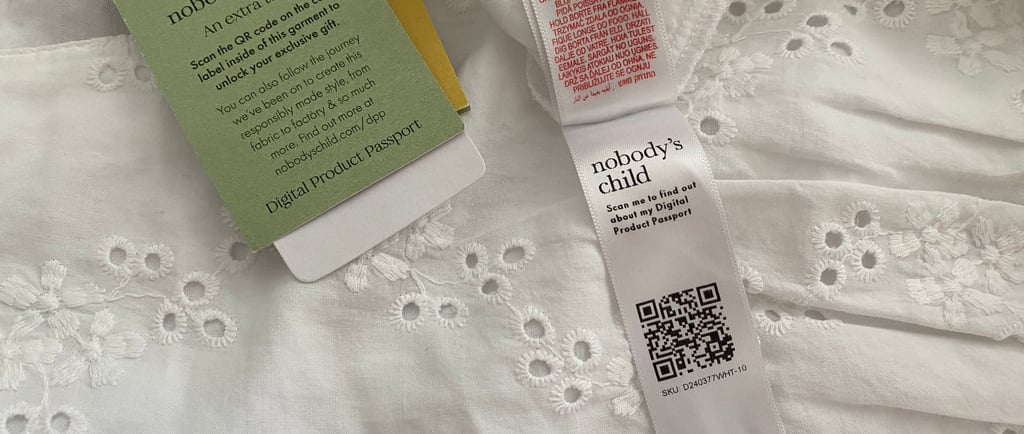Meet the Digital ID That’s Making Fashion Transparent
10/10/20253 min read


A new kind of label
Imagine scanning a tiny QR code on your shirt and instantly seeing where the cotton was grown, who made it, and how to recycle it when you’re done. That’s the idea behind the Digital Product Passport, or DPP, the fashion industry’s newest tool for transparency and sustainability.
A DPP is like a digital ID card for your clothes. It stores key information about a garment’s origin, materials, and environmental impact, all accessible with a quick scan. For shoppers, that means instant insight into what they’re buying. For brands, it’s a way to prove they’re walking the sustainability talk.
Nobody's Child Image of DPP
Why Everyone’s Talking About It
The European Union’s new Ecodesign for Sustainable Products Regulation will require all textiles sold in the EU to carry a Digital Product Passport by 2030, with early rollouts starting in 2027 [1]. The goal is simple: make supply chains transparent and stop vague greenwashing claims from slipping through.
But this isn’t just about ticking a regulatory box. DPPs are pushing brands to rethink how they track materials, communicate with customers, and design for circularity [6].
The Benefits for Brands and Buyers
For brands, DPPs build trust and authenticity. They help fight counterfeits, simplify sustainability reporting, and make resale and recycling much easier [6].
For consumers, it’s a chance to shop smarter. You can see exactly what your clothes are made of, how to care for them, and where to send them when they’ve reached the end of their life. And when you’re ready to sell them on, that verified data adds real value [5].
The Roadblocks Ahead
Getting there isn’t effortless. Many brands are still figuring out how to collect and share the right data across suppliers, and smaller labels can find the process expensive or complex. There’s also the challenge of making sure everyone uses the same standards so the system actually works across borders.
Even so, early adopters are proving that starting small pays off.
Who’s Leading the Change
UK-based brand Nobody’s Child began testing DPPs in 2023 and plans to roll them out across all collections by 2025 [4]. Each piece includes a scannable code that reveals over a hundred data points, from fabric source to care tips.
Luxury groups like Kering and Moncler are exploring similar technology as a way to guarantee authenticity and deepen customer trust [2]. And consumers are ready. A Certilogo survey [3] found that nearly half of respondents already know about Digital Product Passports and believe they’ll make brands more trustworthy.


Nobody's Child Image of DPP
The Future of Fashion
Digital Product Passports are more than a new label trend. They’re the foundation of a transparent, circular fashion system where every piece of clothing comes with a verified story.
The future of fashion isn’t just about how clothes look. It’s about knowing where they come from, how they’re made, and where they’ll go next.
References:
European Commission (2024). Ecodesign for Sustainable Products Regulation (ESPR).
https://environment.ec.europa.eu/topics/circular-economy/sustainable-products/ecodesign-sustainable-products_enThe Business of Fashion x Certilogo (2025). Digital Product Passports: The Future of Fashion Transparency. Roundtable discussion, Milan.
Certilogo & SDA Bocconi Monitor for Circular Fashion (2025). Consumer Awareness and Attitudes Toward Digital Product Passports.
Fashion United (2025). Nobody’s Child Leads the Way with Digital Product Passports.
eBay Circular Fashion Report (2024). The Role of Product Verification in the Resale Market.
McKinsey & Company (2024).From Compliance to Competitive Edge: Preparing for the EU Digital Product Passport.
